
Shells & Fossils
“I do not know what I may appear to the world, but to myself I seem to have been only like a boy playing on the seashore, and diverting myself in now and then finding a smoother pebble or a prettier shell than ordinary, whilst the great ocean of truth lay all undiscovered before me.”
Quote source - Isaac Newton”
-
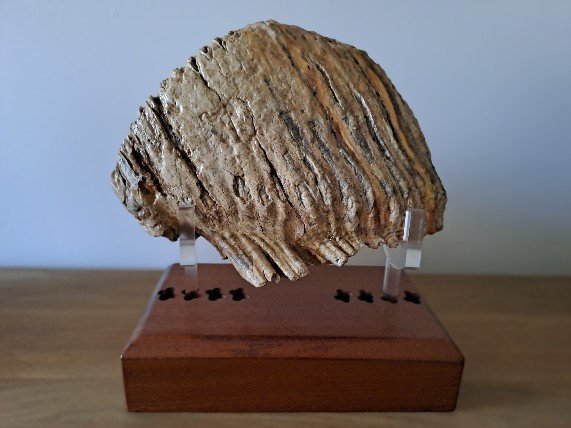
Fossils
Fossils are the preserved remains, or traces of remains, of ancient organisms and animals. Fossils are not the remains of the organism itself but rather an impression of what they once were. We can still learn a lot from the study of fossils and to get an impression of what they once may have looked like.
We have fossils in the Museum collection from 10 million years ago, including several examples of petrified wood, coprolite (fossilised poo) bones, teeth and sea shells.
We have some fragments of dinosaur bones from the fabulously named Flaming Mountains of Bandang in Mongolia. Sharks teeth from the USA including the giant shark species Megladon, which grew to over 15 meters in length, and cruised the worlds oceans some 3.6 million years ago.
The Coprolite is from the Giant Beaver which once roamed continental USA, and probably dates form the Miocene period about 10 million years ago. It has been estimated that there were once as many as 200 million beavers - now that’s a lot of poo!
Most of our fossils are from the USA, Mongolia and Morocco, although we are lucky enough to have a few UK specimens as well.
One of our prized specimens is out Wooly Mammoth tooth which came from Wiltshire England.
The best place to see Mammoth remains is Russia and St Petersburg has some of the finest (if not the finest) you will ever see. Virtually intact specimens complete with hair pulled from the permafrost. Yekaterinburg also has an excellent (but badly signposted) Natural History Museum and this was the first place we ever saw the “colour” of a Wooly Mammoth.
-

Sea Shells
Shells are the homes for one of the most numerous species on the planet and may make up as much of 25% of known species. As many as 65000 different types of marine mollusc and in this case (Photo above) a cephalopod - a Nautilus.
These ancient and fascinating species may have existed in our seas for 480 million years or more! Existing even before the dinosaurs. They are yet to survive behind man kinds reign, and now they now in trouble.
Shells are made by the animal by secreting small particles which eventually form the hardened shell, protecting the sea creature within. The shapes and types, as well as the diversity is simply amazing.
Some sea creatures have a deadly trick up their sleeve and Coneshells can inject venom via a harpoon or dart. These venoms are mainly peptides (snakes, spiders and scorpions also use similar neurotoxins) and very occasionally a small number of species can be fatal to humans. All 500+ know species of Coneshell are venomous. They hunt their prey and use the harpoons to kill it. Once used the “harpoon” is deposed of. They may have up to 20 replacements growing at any one time.
We have several specimens of cone shell in the museum collection.
One our favourite Maine sea creatures are Nudibranchs, which are a group of soft-bodied marine gastropods. They are simply stunning and almost impossible animals, with vibrant colours, but you won’t find a Nudibranch shell as they shed it as the larval stage.
-

Organics
Amber (tree resin) can contain perfectly preserved soft tissue specimens and unlike fossils they retain their DNA. Our Amber is from the home of Amber Lithuania which once had forests of trees that produced the sap that Amber is. The Curonian spit (a sand bar across the Baltic Sea is a great place to Beachcomb, particularly after a storm when Amber gets washed up. There are also plenty of places to buy it off the sea front. if your Beachcombing skills desert you. We like our Amber raw and natural.
Coral reefs are colonies of coral polyps held together by calcium carbonate, polyps are actually marine invertebrate animals, which create a vital ecosystem for other forms of marine life, as both fish nurseries and homes for countless marine mollusc and marine invertebrates. The ocean would be a poorer place without them. Coral bleaching (actually the result of polyps dying from overheating / ph change etc) is becoming a significant risk to coral around the world. The polyps live on algae, (zooxanthellae) and when the corals are stressed, they expel the algae which is living in their Calcium Carbonate shell, causing the coral to turn white, (bleach) and the polyps to starve to death and die.
Pearls were once the darling of the jewellery industry and where would the 1920’s have been without flappers and a pearl neckless?
Our black pearls are from Tahiti which was home to the free diver and this Pacific Island has become synonymous with the “pearl” Now it is mainly pearl farms. (cultured pearls).
They can be produced by oysters and freshwater mussels (White River Pearl from Vietnam) and form as a result of the animals natural defence against an irritant such as sand getting into their bodies. When it detects an invader it secretes a semi-translucent substance called ‘nacre.’ and it is layers and layers of this substance which goes to make the pearl and that amazing semi translucent, iridescent finish.

Mammoth Tooth - Witshire England. These giants of the tundra once roamed Britain as well, and they were around for over 300,000 years, probably wiped out by us. A small heard may have survived as recently at 10,000 years ago on the

Various Shells from New Zealand, Senegal, Peru, Nicaragua, including the beautiful Heart Cockle (Centre Picture).

Nautilus shell - Flores Indonesia. These stunning and ancient cephalopods are now protected under CITES. They have been on the planet for over 480 million years! We have nearly ended they existence in just 200,000 years on modern man, in the blink of an evolutionary eyelid.

They don't look like this in the wild, they are usually encrusted with a white coating. This beautiful "finish" is achieved by sanding them off and polishing. There are more than 65000 species of marine mollusc (over 100,000 if you included fossils. Abalone shell exceptionally large and beatiful specimen. El Salvador.
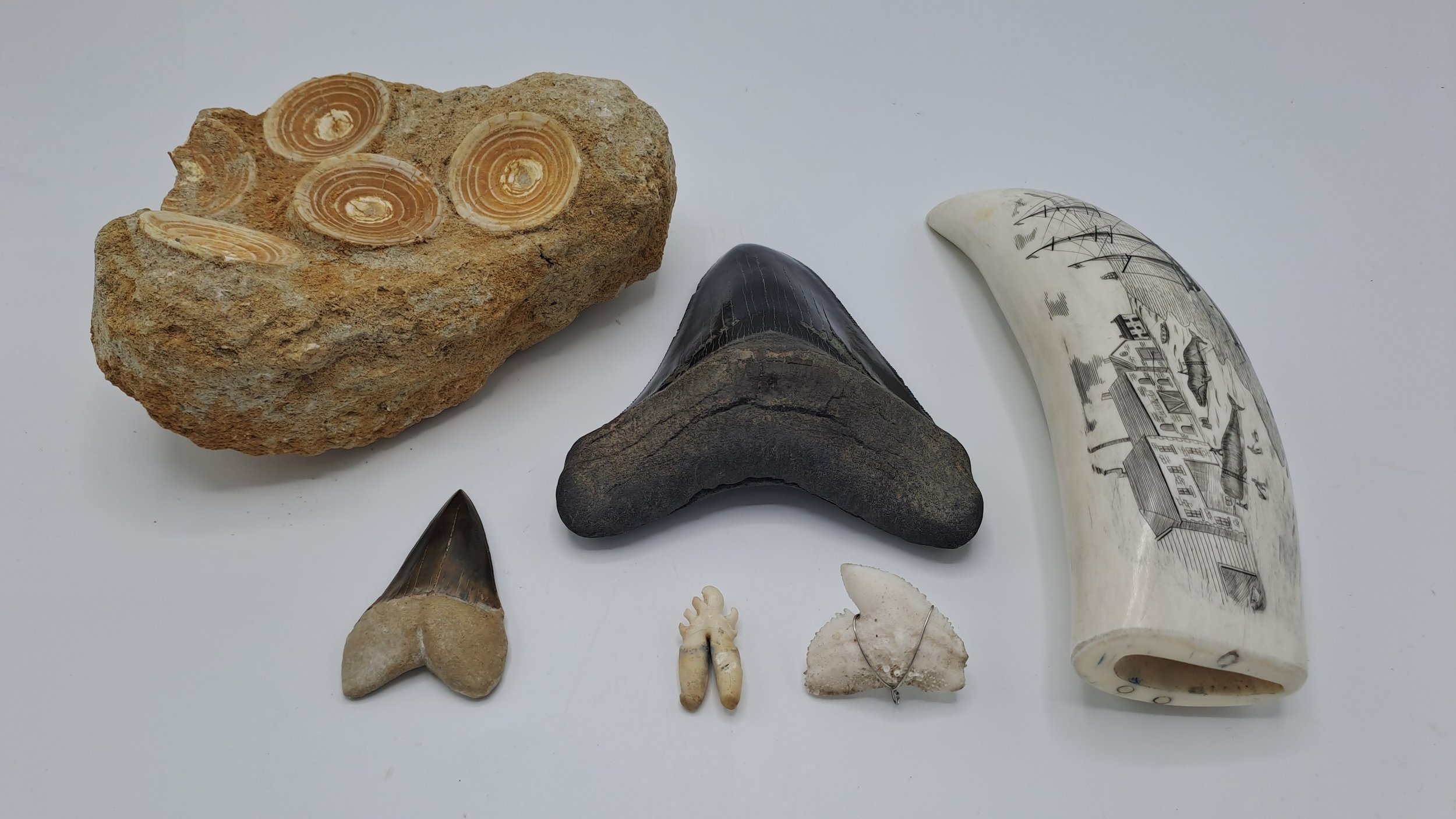
Fossils of shark spine (top left) and centre top Megalodon Tooth c 3.6 Million years old, these ancient shark species made even the great white look small. Bottom left Fossilised Great White (Carcharodon carcharias) tooth by comparison.
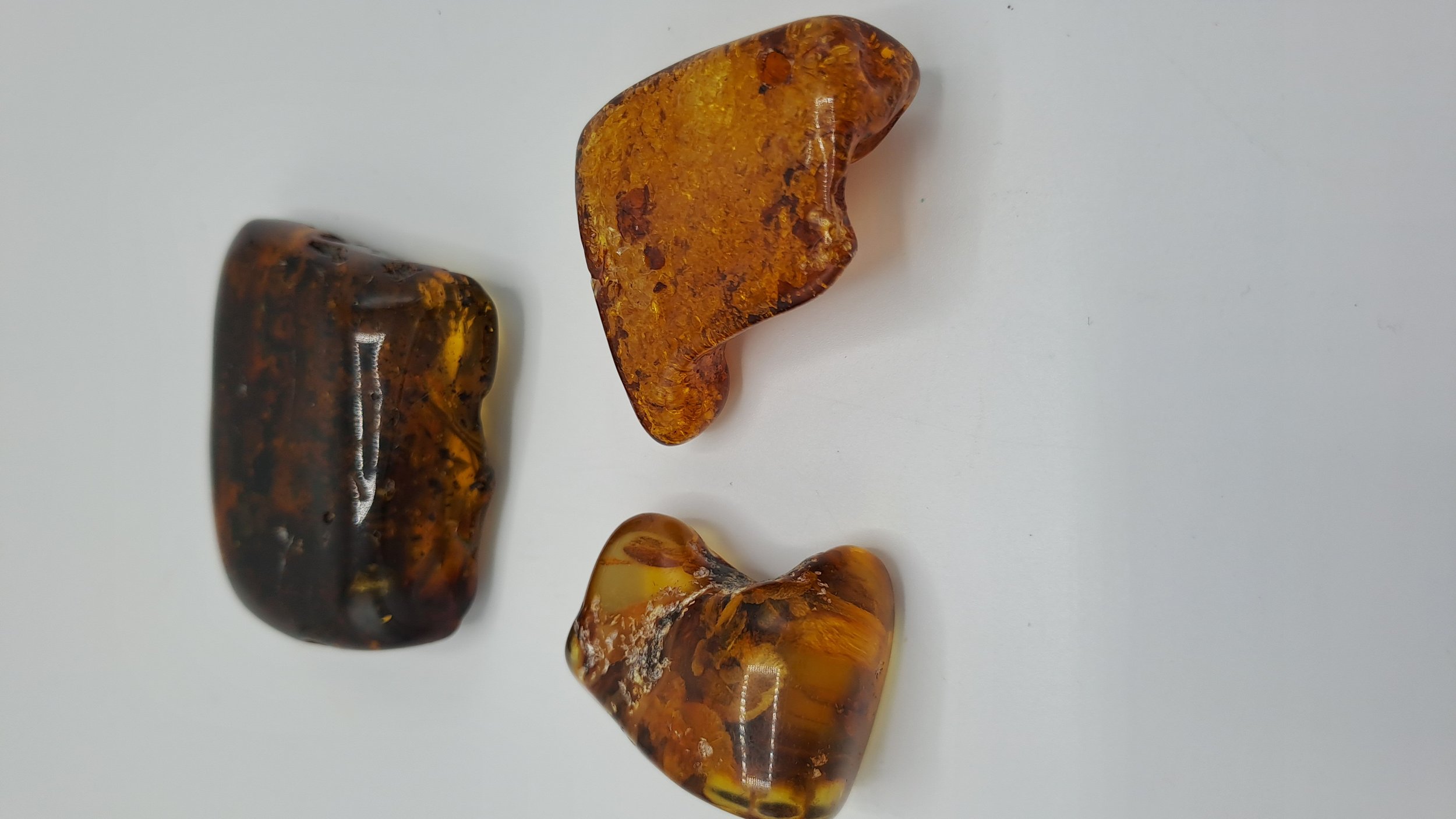
Amber from the Curonian Spit (Lithuania and Kaliningrad). It was fun beach combing for these washed up after a storm.
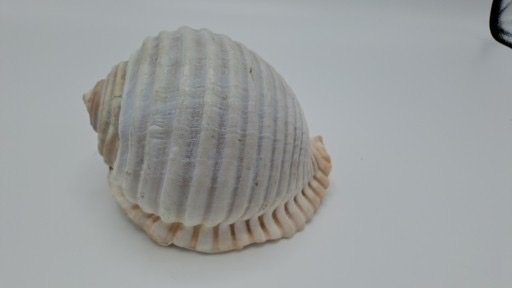
Peruvian conch shell (back right), these large shells were used by the Inca to communicate. We have seen many similar in Inca museums in Peru. A hole is normally drilled in and a mount piece attached so they can make a sound.
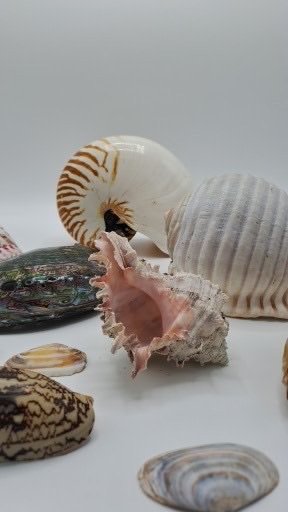
Close of of shells which often feature stunning inside colours such as this beautiful pink shell from Senegal.
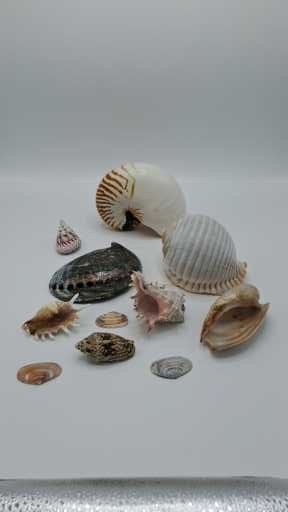
Selection of shells. We have many more awaiting display and cataloging.
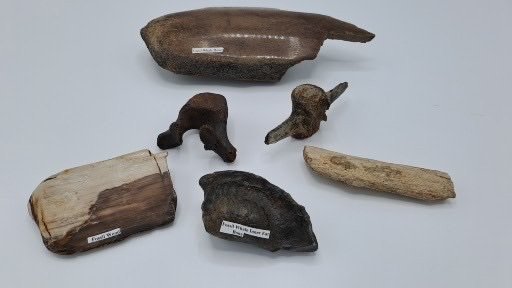
Various Fossils (back to front) Fossilised Whale bone, dolphin spines, Left from petrified timber, Middle Fossilised Whales inner ear. Right fossilised dinosaur bone. (Mongolia).

Corals, (Seychelles), including Red Coral (Pacific Ocean) Mother of Pearl necklace (Fiji), Black Pearls (Tahiti) and River Pearl (Vietnam). Cowie and Cone Shells, all in natural form.
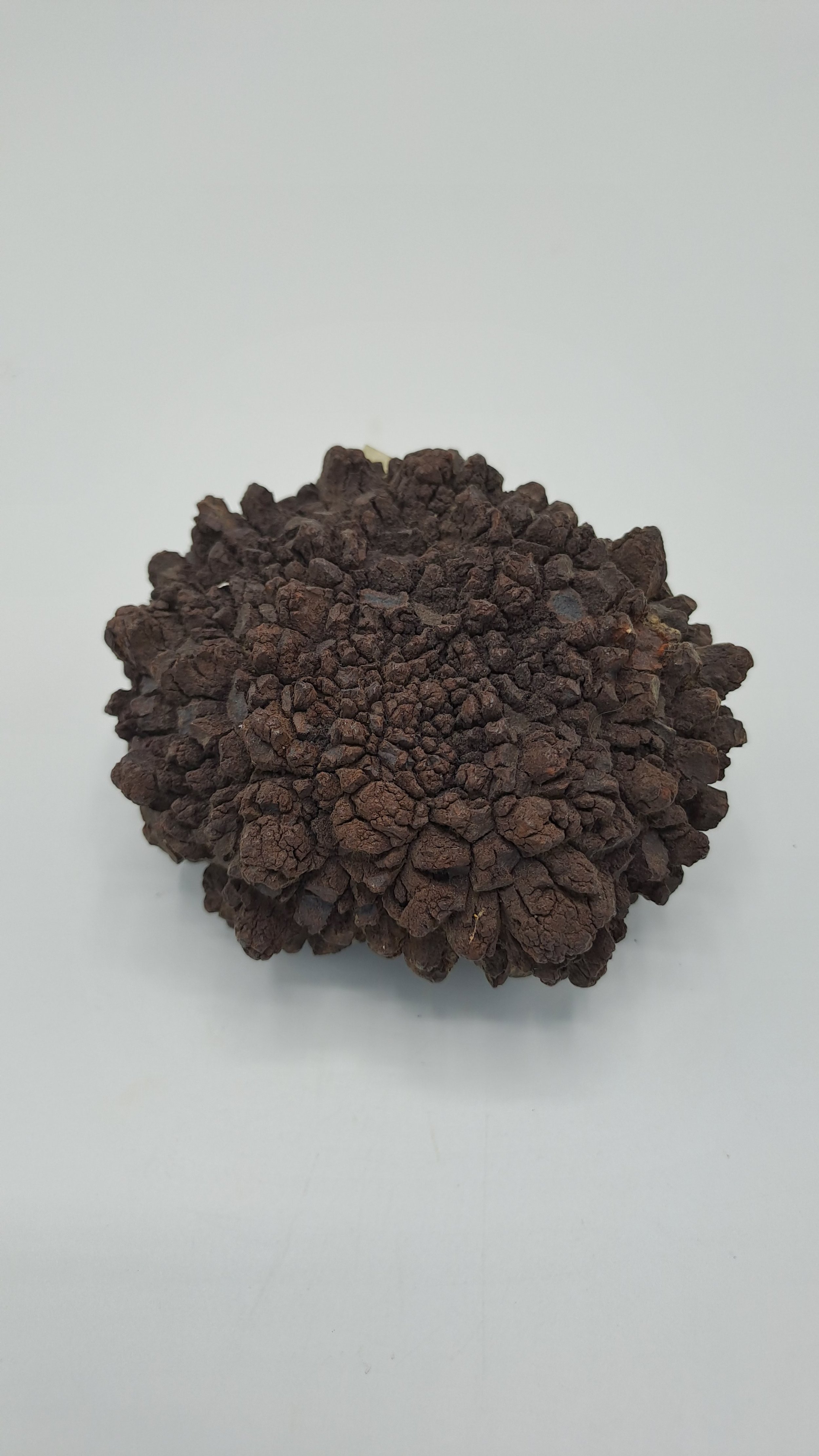
Coprolite - fossilised faecal matter, in this case Giant Beaver poo. 10 million years old! Washington USA. It has been estimated that as many as 200 million beavers once lived in continental USA.